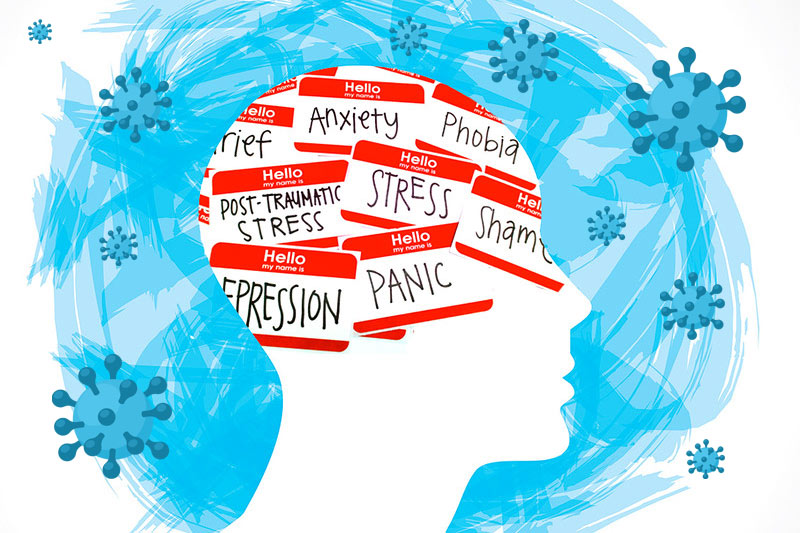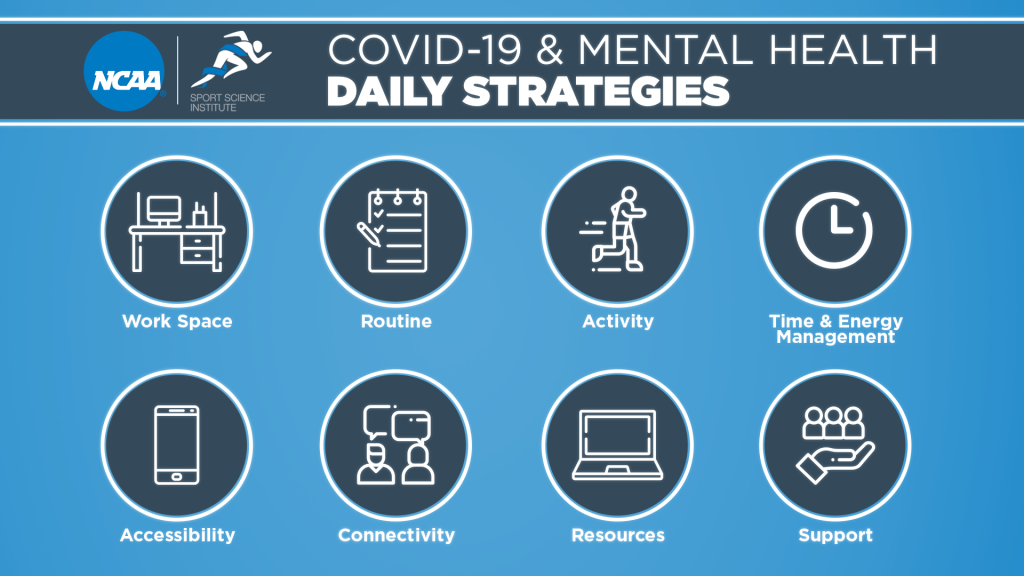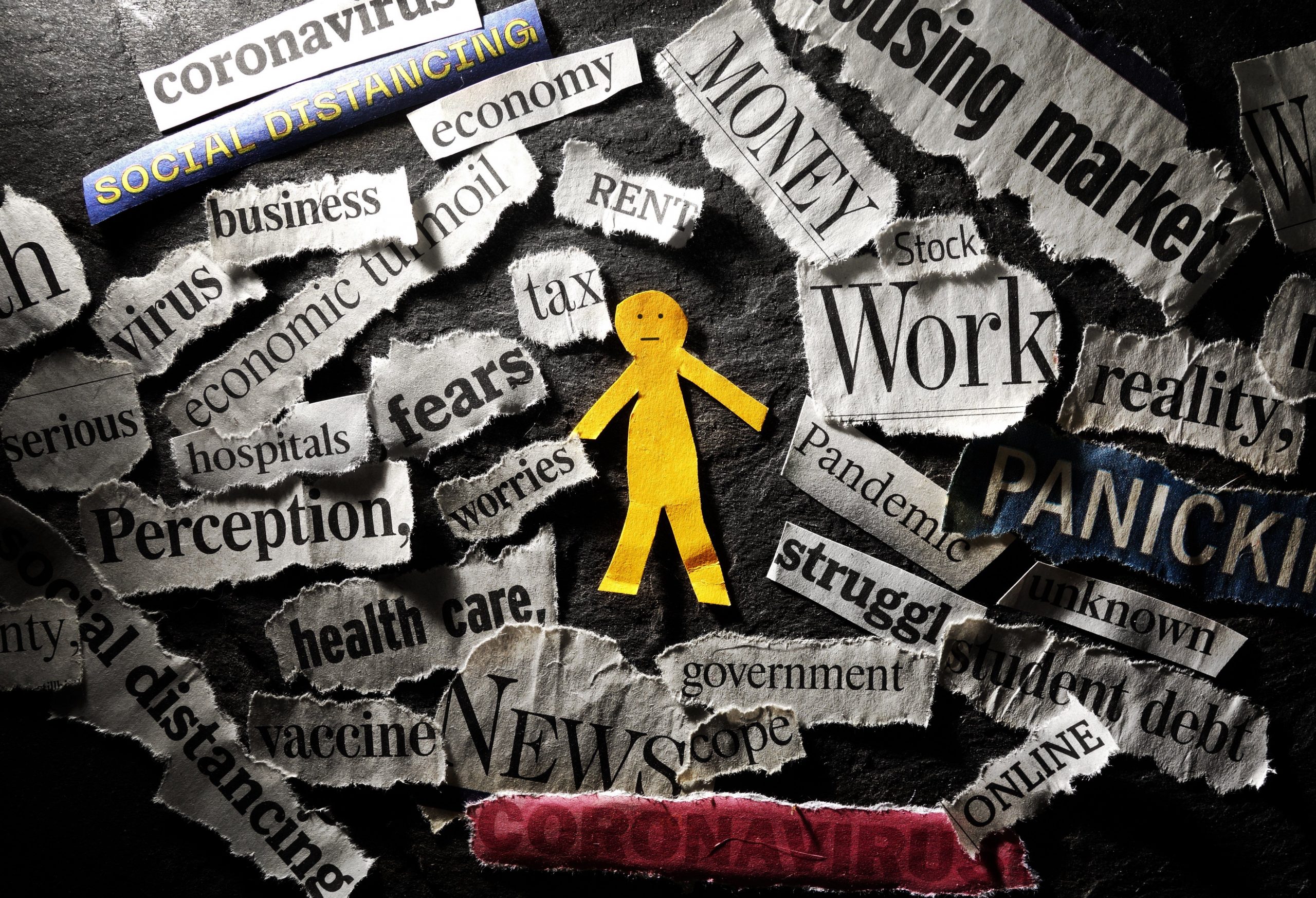The COVID-19 Pandemic has been a trying time and a mentally exhausting experience for most of the world. The United States is continuing to navigate its way through the pandemic while cases have been in a rising and falling pattern almost each day. Some states have been very strict with stay at home orders, some fall somewhere in the middle, and then some only attempted it for a very short time. Many individuals have experienced a large strain on their mental health throughout the long-winded process. This includes people from all walks of life such as the quarantined, the essential workers, healthcare workers, children, and the elderly. Most human beings enjoy having a routine and when that routine is uprooted, stress and anxiety can become overwhelming.

The “New Normal”
March 2020: the month when everything changed. Multiple countries around the globe were quarantined before the United States, who began to quarantine around mid-March. Initially, many people truly believed that the quarantine would last a few weeks. It was a widely shared belief that began to seem less likely after the first month went by. The United States is a capitalistic society, which means that working 40+ hours a week is expected of a functioning adult. The shared mentality is that one must work and operate a full schedule most days in order to be successful. Therefore, the loss of these schedules affected many individuals negatively. Millions were laid off from their jobs due to businesses having to shut down, causing one of the largest spikes of unemployment in United States history. In fact, the unemployment rate jumped from 6.2 million to 20.5 million within four months. In a society where “hustle and grind” has become the mantra of so many, this statistic is devastating.
Once people finally began to realize the severity of the virus, panic began to set in. Toilet paper was nowhere to be found in stores and food was flying off the shelves. Fear of the uncertainty, of the unknown. We haven’t seen a pandemic in the U.S. like COVID-19 since the Spanish Flu a century ago. In these circumstances, individuals are prone to extreme amounts of stress. Worrying about catching the virus, when and if they will be able to work again, when their children can return to school (which is still being debated), and the fear for their elderly loved ones and their health. These types of stressors combined with anxiety due to the loss of normalcy are a recipe for mental strain. Health care providers are also particularly vulnerable to emotional distress in the current pandemic, given their risk of exposure to the virus, concern about infecting and caring for their loved ones, shortages of personal protective equipment (PPE), longer work hours, and involvement in emotionally and ethically fraught resource-allocation decisions. Individuals who are not essential workers have been experiencing a much more intense form of quarantine. Many have been hunkered down, only leaving the house to buy groceries. Some have even been ordering supplies strictly online. People have gone months without seeing their family members in person and without seeing their friends. Individuals who live alone may have become even more depressed and stressed than those who live with others. A recent review of psychological samples of quarantined people and of health care providers may be instructive; it revealed numerous emotional outcomes, including stress, depression, irritability, insomnia, fear, confusion, anger, frustration, boredom, and stigma associated with quarantine, some of which persisted after the quarantine was lifted. Even though the quarantine has been almost completely lifted across the states, many individuals are still opting to remain quarantined.
How does it feel when the government drops the ball?
As stated earlier in this piece, the United States government was slower to react than other countries. According to the CDC, the first confirmed case of COVID-19 was on January 20, 2020. At this point in time, the citizens of this country were not phased and were completely unprepared for what was to come. The gravity of the situation was extremely downplayed by federal officials and their statements were nothing short of confusing. As of April 1, 2020, a total of 72 days after the first reported U.S. case of Covid-19, 33 states and dozens of localities had issued stay-at-home orders, and a handful more had simply instructed nonessential businesses to close, but some orders lacked strong enforcement mechanisms. With all of this considered, it is important to examine the consequences of this delayed reaction. Currently, almost 200,000 people have died in the US from complications with COVID-19. There have been over 6 million reported cases. If the U.S. government had reacted quicker and states would have declared the stay at home order sooner, would things be different? Would the virus had been contained quicker? These are the questions that citizens are left to ponder, and continue to ponder as more and more people test positive. Some will ponder it forever while grieving a loved one that passed from the virus. This uncertainty and the feeling of impending doom causes individuals to feel even more anxious and depressed. When will this be over? When will it get better?
Mental Health resources to contact
Anything that’s human is mentionable, and anything that is mentionable can be more manageable. When we can talk about our feelings, they become less overwhelming, less upsetting, and less scary.
Fred Rogers
If you are feeling overwhelmed due to circumstances related to COVID-19 there are numerous options to consider and accessible organizations who offer assistance. One may consider contacting their state psychological association that will help provide local psychologists/practices. The American Psychological Association also recommends that those without insurance can contact their local department of health to check if they make referrals. They may also have options for those whose insurance does not completely cover a visit. The APA also recommends an app called PsyberGuide which scientifically evaluates mental health apps and resources. Other organizations the APA recommends for finding mental health resources include The Substance Abuse and Mental Health Services Administration hotline at 800-662-4357 and the National Alliance on Mental Illness hotline at 800-950-6264.

Moving forward, we as a people must learn to adjust to this new way of living. This includes wearing masks, constantly sanitizing hands and surfaces, staying 6 feet from others and all the other practices that have been adopted in this “new normal.” Something important is to adopt is more kindness. Helping our friends and family and even strangers cope with these new norms can be so much easier, with some understanding and empathy. If someone asks you to wear a mask, and you are able to, complying with them might just make that person’s day much easier. Try face-timing with someone different a few times a week to boost spirits. So many small things can bring a smile to someone who needs it. Recognizing that fact is so important heading into the upcoming winter when so many experience seasonal depression, coupled with the depression/anxiety due to the virus. These are trying times. Love should always be the answer, and we could all use some serious doses of serotonin to boost our mental health.
The pandemic may be far from over, of this we are still unsure. Uncertainty coupled with the loss of normalcy can cause one to lose hope. It is important to remember that the rest of the world is with you. If one thing is true about COVID-19, it is that we are all in this together.
References
American Psychological Association. “Finding Local Mental Health Resources during the COVID-19 Crisis.” American Psychological Association, 2020, Retrieved from: www.apa.org/topics/covid-19/local-mental-health.
American Psychological Association. “State, Provincial & Territorial Psychological Association Directory.” American Psychological Association, 2008, Retrieved from: www.apa.org/about/apa/organizations/associations.
Haffajee, Rebecca L., et al. “Thinking Globally, Acting Locally – The U.S. Response to Covid-19: NEJM.” New England Journal of Medicine, 28 May 2020, Retrieved from: www.nejm.org/doi/full/10.1056/NEJMp2006740.
Harcourt, Jennifer, et al. “Severe Acute Respiratory Syndrome Coronavirus 2 from Patient with Coronavirus Disease, United States – Volume 26, Number 6-June 2020 – Emerging Infectious Diseases Journal – CDC.” Centers for Disease Control and Prevention, June 2020, Retrieved from: wwwnc.cdc.gov/eid/article/26/6/20-0516_article.
Kochhar, Rakesh. “Unemployment Rose Higher in Three Months of COVID-19 than It Did in Two Years of the Great Recession.” Pew Research Center, 11 June 2020, Retrieved from: www.pewresearch.org/fact-tank/2020/06/11/unemployment-rose-higher-in-three-months-of-covid-19-than-it-did-in-two-years-of-the-great-recession/.
One Mind PsyberGuide. “PsyberGuide: The Mental Health App Guide Designed with You in Mind.” One Mind PsyberGuide, 2020, Retrieved from: onemindpsyberguide.org/.
Pfefferbaum, Betty, et al. “Mental Health and the Covid-19 Pandemic: NEJM.” New England Journal of Medicine, 13 Apr. 2020, Retrieved from: www.nejm.org/doi/full/10.1056/NEJMp2008017.
The New York Times. “Coronavirus in the U.S.: Latest Map and Case Count.” The New York Times, 12 Sept. 2020, Retrieved from: www.nytimes.com/interactive/2020/us/coronavirus-us-cases.html.
IVolunteer International is a 501(c)3 tech-nonprofit registered in the United States with operations worldwide. Using a location-based mobile application, we mobilize volunteers to take action in their local communities. Our vision is creating 7-billion volunteers. We are an internationally recognized nonprofit organization and is also a Civil Society Associated with the United Nations Department of Global Communications. Visit our profiles on Guidestar, Greatnonprofits, and FastForward.


